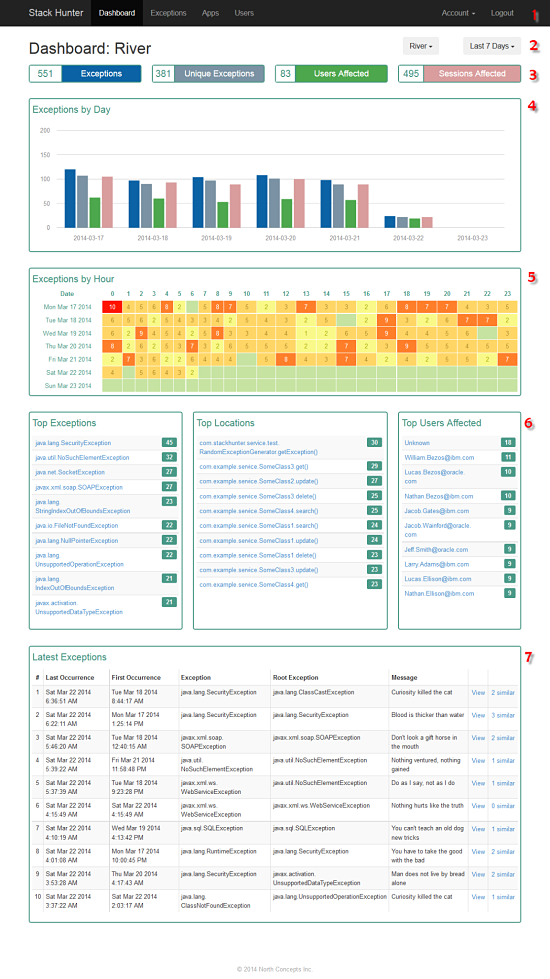Stack Hunter helps you to to track exceptions in Java web applications.
Our interview below is with Dele Taylor, founder and developer of Stack Hunter:
Q: What is Stack Hunter?
A: Stack Hunter is a tool to track exceptions in Java web applications. It plugs into your apps to capturing exceptions, along with other diagnostic information. When an exception occurs, it sends an email alert and makes the details available through its web interface.
Q: What was your inspiration for developing Stack Hunter?
A: Stack Hunter solves the difficult, and often time consuming, problem of locating and fixing application failures. This is a challenge I’ve felt first-hand building applications for many of my consulting clients.
One of the main ways we were notified of problems at these clients were when customers reported them. Even for clients with mature monitoring in place, it was still very difficult to find the right server, component, and log file. At the larger organizations, we would not have direct access to the production environments or files and had to go through intermediaries. Once we did get the files, they would be hundreds of megs in size and contain data from all users and actions happening on those servers.
One of the biggest challenges, however, was the quality of data captured with each exception. In most cases, all we got was a timestamp and stacktrace. No information about which user experienced the issue. No indication of which data they were working with. Not even a trace of which browser they were using.
Over the last twelve years I’ve created several solutions to these problems for my clients, but now I’m aiming at a tool everyone can use.
Q: What was technically the most challenging part of developing it?
A: Probably the database. I’m a generalist and my database optimization skills stop at a point. Also, I initially went with a MongoDB, NoSQL database since Stack Hunter needs to store a variable number of columns for each failure. MongoDB was brand new to me and I eventually went back to relational databases. It turns out I can hack the flexible schema in an RDBMS and they have a lot more users and resources out there.
Q: What’s your favorite feature?
A: My favorite feature of Stack Hunter has got to be the dashboard. It lets me see the big picture as well as any overall trends. It also lets me drill down to the details with only one or two clicks.
On the other hand, I think a lot of developers will like the Latest Exceptions page. During development, they can use it to see their app’s exceptions in real-time.
Q: When do you plan to launch it?
A: Stack Hunter is currently only available to private beta users. You can get invited by requesting access on the sign-up page. I don’t have a set public date yet. My main focus is making sure the tool solves the right problem in the best way for its users.
StackHunter – Dashboard Screenshot:




